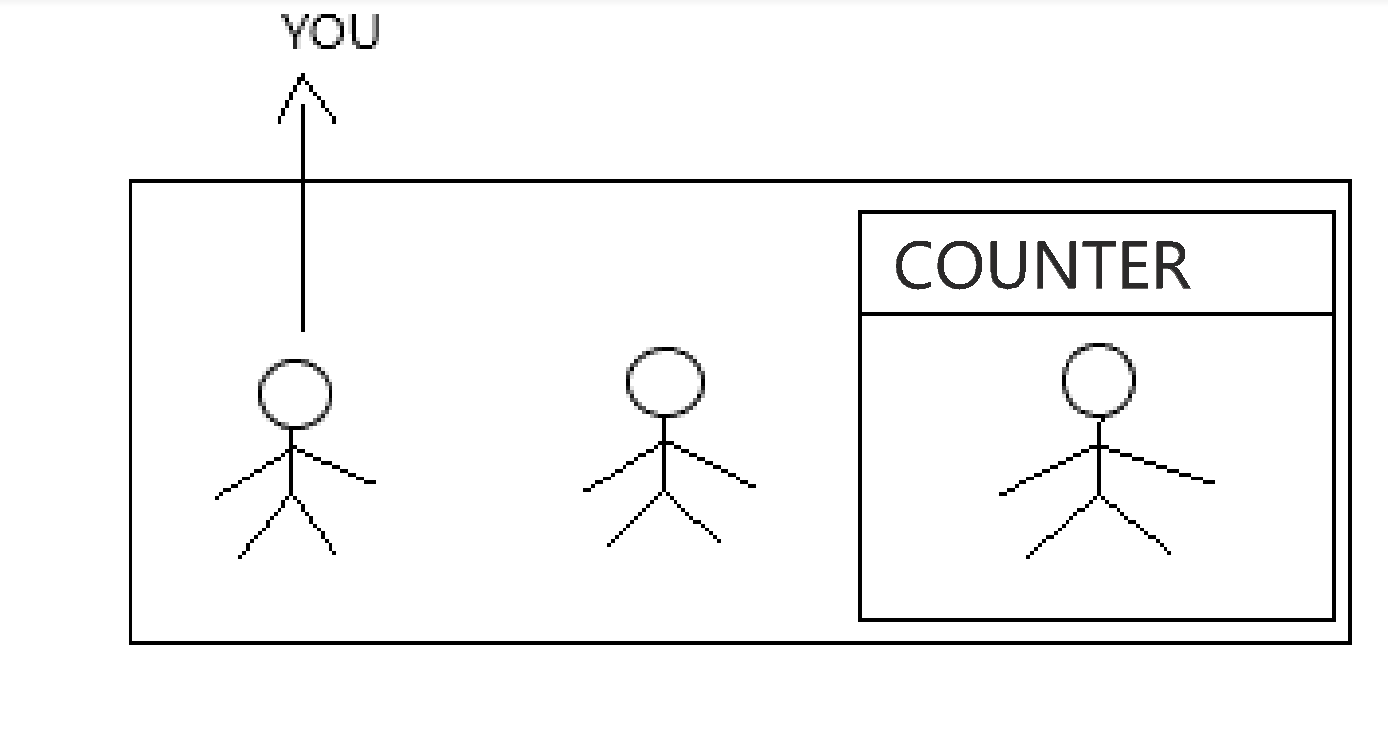
Open-Source Internship opportunity by OpenGenus for programmers. Apply now.
This article is all about the basic terminologies in CPU Scheduling such as Arrival, Waiting, Burst, Turnaround, Completion Time and more in Simple Words and we will discuss about it in detail with a real world example.
**Scheduling Metrics: Scheduling metrics use to measure something, there are different metrics.
So let us start talking about 5 main types of Scheduling Metrics they are :-
Terms:
- ARRIVAL TIME
- WAITING TIME
- BURST TIME
- COMPLETION TIME
- TURN AROUND TIME
- Other terms: Response Time(RT), Throughput, Processor Utilization
We will take the example of bank and explain it in a detailed manner .
1) ARRIVAL TIME
Suppose you have reached the bank at 9 o'clock and this "point of time" is called as Arrival Time .
ARRIVAL TIME With Proper definition and Real World Example :-
Standard Definition :-
The "point of time " at which process enters the ready queue or state is called as ARRIVAL TIME and it is denoted as (AT).
Standard Definition :-
The "point of time " at which process enters the ready queue or state is called as ARRIVAL TIME and it is denoted as (AT).
Arrival Time (A.T.) = Completion Time (C.T.) - Turn Around Time (T.A.T)
Arrival Time (A.T.) = Completion Time (C.T.) - Turn Around Time (T.A.T)

In the above diagram we can see that you are entering the bank at 9 0'clock and this "point of time" is called as ARRIVAL TIME ie (AT).
PROPERTIES:-
- Marks the entry point of the process in the queue.
- Computed before the execution of process.
- Related to the Ready State of the CPU.
2) WAITING TIME
And now you are waiting from 9 to 9:45 and this "duration" is called as Waiting Time.
WAITING TIME With Proper definition and Real World Example :-
Standard Definition:-
How much "duration" processes spend in the ready queue waiting their turn to get on the CPU is called as WAITING TIME and it is denoted as (WT).
Standard Definition:-
How much "duration" processes spend in the ready queue waiting their turn to get on the CPU is called as WAITING TIME and it is denoted as (WT).
Waiting time(WT) = Turnaround time(TAT) - Burst time(BT)
Waiting time(WT) = Turnaround time(TAT) - Burst time(BT)

In this above diagram we can see that you are waiting from 9 to 9:45 and this "duration" is called as WAITING TIME ie (WT).
PROPERTIES:-
-
The time process spent in the ready queue and for I/O completion.
-
CPU Scheduling Algorithm doesn’t affect the amount of time during which a process executes or does I/O but only the amount of time that a process spends waiting in the ready queue.
-
Waiting time has no such major effect.
3) Burst Time
Then after waiting a lot of time you have finally reached the counter and now from
9:45 to 10:00 your work at the counter has been done and this "duration" is called as the Burst Time.
Burst Time With Proper Definition and Real World Example :-
Standard Definition:-
How much "duration" required by the process to get execute on CPU is called as the BURST TIME and denoted as (BT).
Standard Definition:-
How much "duration" required by the process to get execute on CPU is called as the BURST TIME and denoted as (BT).
Burst Time (B.T.) = Completion Time (C.T.) - Waiting Time (W.T.)
Burst Time (B.T.) = Completion Time (C.T.) - Waiting Time (W.T.)

In this above diagram we can see that after waiting a lot of time you have finally reached the counter and now from 9:45 to 10:00 your work at the counter has been done and this "duration" is called as the BURST TIME ie (BT).
PROPERTIES:-
-
Marks the exit point of the process in the queue.
-
Computed after the execution of process.
-
Related to the Running State of the CPU.
4) Completion Time
Finally you are out of the bank and you are out at 10:00 and this "point of time" is called as Completion Time .
Completion Time With Proper Definition and Real World Example :-
Standard Definition :-
The "point of time " at which process complete its execution is called as COMPLETION TIME and it is denoted as (CT).
Standard Definition :-
The "point of time " at which process complete its execution is called as COMPLETION TIME and it is denoted as (CT).
Completion Time (C.T.)= Arrival Time (A.T.) + Turn Around Time (T.A.T)
Completion Time (C.T.)= Arrival Time (A.T.) + Turn Around Time (T.A.T)

In this above diagram we can see that finally you are out of the bank and you are out at 10:00 and this "point of time" is called as COMPLETION TIME ie (CT).
Properties:-
-
Completion time is the point of time at which a process completes its execution on the CPU and takes exit from the system.
-
It is also called as exit time.
5)TURN AROUND TIME

TAT = CT - AT
Where TAT = Turn Around Time
CT = Completion Time'
AT = Arrival Time
PROPERTIES:-
-
The time since the process entered into ready queue for execution till the process completed it’s execution.
-
Different CPU Scheduling algorithms produce different TAT for the same set of processes.
-
The turnaround time is generally limited by the speed of the output device.
Difference between Turnaround Time and Waiting Time:
Turnaround Time PROPERTIES:-
-
The time since the process entered into ready queue for execution till the process completed it’s execution.
-
Different CPU Scheduling algorithms produce different TAT for the same set of processes.
-
The turnaround time is generally limited by the speed of the output device.
Waiting Time PROPERTIES:-
-
The time process spent in the ready queue and for I/O completion.
-
CPU Scheduling Algorithm doesn’t affect the amount of time during which a process executes or does I/O but only the amount of time that a process spends waiting in the ready queue.
-
Waiting time has no such major effect.
Difference between Arrival Time and Burst Time:
Arrival Time PROPERTIES:-
-
Marks the entry point of the process in the queue.
-
Computed before the execution of process.
-
Related to the Ready State of the CPU.
Burst Time PROPERTIES:-
-
Marks the exit point of the process in the queue.
-
Computed after the execution of process.
-
Related to the Running State of the CPU.
POINTS TO REMEMBER ->
-
Arrival and Completion Time are the "Point of time" for example: 10 pm , 11 am etc.
-
Waiting Time , Burst Time and Turn around Time are nothing but the "Durations"
for example : duration of 1 hour , duration of 15 minutes etc.
There are other Scheduling Metrics they are :-
- Response Time(RT): The time it takes to start responding to a request. It from first submission of the process until the first running.
RT = ( Time of first response ) - ( Time of submission of request )
- Throughput: The number of processes that are completed per unit time.
Throughput = (Number of processes completed) / (Time unit)
- Processor Utilization: The percentage of the time that CPU is busy, means not idle.
Processor utilization = (Processor busy time) / (Processor busy time + Processor idle time)
So this is all about the basic terminologies in CPU Scheduling in Simple Words with a real world example in this article at OpenGenus.

